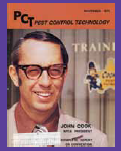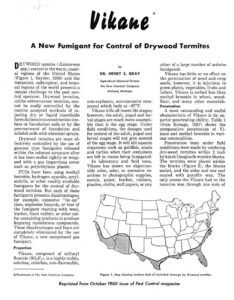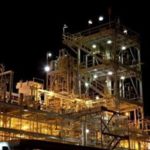Looking for Access?
Cur nutrix cantare?Est camerarius accentor, cesaris.Eposs sunt solems de varius liberi.
Register TodayCur nutrix cantare?Est camerarius accentor, cesaris.Eposs sunt solems de varius liberi.
Register TodayCur nutrix cantare?Est camerarius accentor, cesaris.Eposs sunt solems de varius liberi.
Login NowSix Decades of Success, and Counting
In 2021, the pest management industry celebrates the 60th year of use of Vikane as a proven solution to halt damage to properties by drywood termites, other wood-destroying insects and other structure-infesting pests, including bed bugs and rodents. Six decades of continued availability is a notable hallmark. The story of Vikane is one of transition with the cooperation of the manufacturer, fumigators, pest management companies, regulatory agencies and manufacturers of innovative equipment. The story has been written with millions of dollars in research investment to facilitate label changes and stewardship practices to meet changing regulatory standards and to educate generations of fumigators and pest management professionals and the property owners they serve.
What has not changed is industry support and the proven ability of a fumigation with Vikane to eliminate drywood termites from a structure. No other technology can match Vikane’s ability to eliminate 100% of drywood termites in homes and commercial properties. Today, just as it was in 1961, Vikane remains the “one and done” solution for drywood termites.
Early 1950s
The Dow Chemical Company initiates research at its Seal Beach, California, laboratory to find an effective alternative for methyl bromide for structural fumigations.
Chemical Company initiates research at its Seal Beach, California, laboratory to find an effective alternative for methyl bromide for structural fumigations.
More: Methyl bromide was commonly used for control of drywood termites but came with the disadvantage that it could react with wool, leather, foam rubber or other sulfur-containing materials to produce lingering malodorous compounds. In the early 1950s, California fumigators asked researchers at the Dow Chemical Research facility at Seal Beach, California, to find an effective fumigant without these disadvantages.
1957-1960
First reports on the properties of Vikane as an effective method of drywood termite control are published in scientific journals and in the October 1960 issue of Pest Control magazine.
More: Laboratory and field tests show sulfuryl fluoride has superior penetrating ability to achieve 100% control of drywood termites. The chemistry also is nonflammable, nonexplosive, nonco
rrosive and nonreactive to produce malodors. Registration was granted by the U.S. Department of Agriculture in 1959.

1961
Commercial sale of Vikane begins in Florida and California. Dow Chemical Company scientists develop the Vikane Fumiguide® calculator to help fumigators estimate the half-loss time in a structure, allowing for easier dosage calculation.
More: Trademarked by Dow Chemical Company, the Fumiguide B slide rule calculator gave fumigators the ability to estimate half-loss time (HLT) to calculate dosing for nonmonitored fumigations with 20-to-24-hour exposure periods. The Fumiguide Y slide rule calculator was used to calculate the actual HLT for monitored fumigations and dosing for fumigations with two 72-hour exposure periods.
1965
The Fumiguide B slide rule (2-24 hour exposure, non-monitored fumigations) was introduced.
1984
As part of the Environmental Protection Agency’s (EPA’s) Label Improvement Program for Fumigants, cartridge respirators are removed from the labeling for Vikane as approved respiratory protection and are replaced with self-contained breathing apparatuses (SCBAs) as required respiratory protection.
1985
The first registration review of sulfuryl fluoride (Vikane) is initiated by the EPA.
1986
The first continuous reading clearance device for Vikane is introduced: the MIRAN, which uses an infrared sensor.
1988
Collaboration between Dow Chemical Company and Interscan Corporation leads to the addition of the Interscan™ gas analyzer as the second continuous reading clearance device for Vikane.
1988
Dow Chemical Company introduces an annual training program for fumigators to ensure the safe and effective handling of Vikane.
1988
Dow Chemical Company helps found the Florida School of Structural Fumigation with the University of Florida.
More: In November 1989, the school graduates its first class with 31 students. Held every year since, graduates have included professionals from the United States, the Caribbean, Canada, Africa, Asia and South America.
1988
A hand-held calculator version of the Fumiguide is introduced, which incorporates the Fumiguides B, Y and S (for “shooting rate” based on fan capacity and relative humidity) and simplified dosage and dose calculations.
More: The electronic version made dosage and dose calculations easy since most people no longer knew how to use slide rules.
1995
The Caretakers℠ Program is introduced to formalize annual stewardship training.
More: As an important part of the stewardship program for Vikane, this mandatory training each year helps thousands of fumigators stay current on label changes, equipment changes, job-site best practices and more.
1996
Extensive labeling changes to Vikane follow the completion of the first registration review of sulfuryl fluoride by the EPA.
More: Changes include adding Aeration Procedures 1 and 2, the Fact Sheet for Vikane (required to be given to the adult occupant before signing the agreement), double bagging with NyloFume® bags, vacating multiunit structures when any unit is fumigated and revised first-aid/emergency response procedures.
2001
The requirement for secondary locks/barricades on exterior entrances, specific directions for fumigating multiunit structures and connected structures, and calibration
interval requirements for the Interscan (within one month of use) are added to the labeling for Vikane.
2004
ProFume® gas fumigant, 99.8% sulfuryl fluoride, is registered in the United States by Dow AgroSciences.
More: At the request of the food manufacturing industry, Dow AgroSciences developed ProFume with sulfuryl fluoride as the active ingredient. It proved to be an effective alternative for methyl bromide, which was being discontinued by the United Nations’ Montreal Protocol as an ozone-depleting substance. Registrations for ProFume have been expanded to more than 22 nations outside the United States, where it is vital for control of postharvest foods and materials such as logs and export goods.
2005
ProFume, 99.8% sulfuryl fluoride, receives expanded registration in the United States for many food commodities and their processed fractions.
2006
Additional aeration requirements, including a fan directed into an attic or opening a door between the house and an attached garage, are added to the labeling for Vikane.
2007
A new chloropicrin dosage model is introduced based on field-test data gathered by the University of Florida and Dow AgroSciences.
More: An upgraded electronic Fumiguide is introduced in 2007 to correspond with the updated chloropicrin dosage model and label changes. Developed from field trials conducted by Dr. Rudi Scheffrahn at the University of Florida and Dr. Bob William at Dow AgroSciences, calculations are based on exposure time, structure volume and construction underseal (slab or crawl space). The chloropicrin dose model was developed by Dr. Scott Ray at Dow AgroSciences.
2008
The EPA requires labeling for Vikane to lower the permissible exposure limit for workers, occupants and bystanders from 5 ppm to 1 ppm. The SF-ExplorIR™ and MIRAN Sapphire are added to the labeling for Vikane as approved clearance devices.
2009
The second registration review for sulfuryl fluoride, including Vikane, is initiated by the EPA.
2009
The manual for Vikane is rewritten and becomes part of the labeling for Vikane. The labeling includes directions for preparation of fish tanks, additional directions of application of chloropicrin (maximum ounces of chloropicrin per release container, minimum number of release containers per 1,000 cubic feet), and the requirement: “Application personnel must participate in Dow AgroSciences’ Sulfuryl Fluoride Training and Stewardship Plan.”
2010
Labeling for Vikane is revised for procedures, and PPE is required (long-sleeved shirt, long pants, goggles no longer permitted as protective eyewear, SCBA required if applying at more than two sites) when applying chloropicrin.
The California Department of Pesticide Registration (CDPR) requires California Aeration Plan (CAP) to be used to aerate structures fumigated with sulfuryl fluoride products registered for residential fumigation, including Vikane. The procedures are developed to ensure worker, bystander and occupant exposure meet the new label requirements of 1 ppm or less.
More: John Sansone wrote an article for PCOC’s “The Voice” about CAP. The article included the following information:
2011
Vikane celebrates 50 years as a proven solution to halt damage to properties by drywood termites, other wood-destroying insects, and other structure-infesting pests, including bed bugs and rodents.
2013
The first app of Fumiguide is developed for surface devices.
2014
Label rate is approved for a 1.9x rate for bed bugs.
More: Resurgence of this pest required determination of the proper dosage rate to control the egg stage, the most difficult-to-control life stage. Survival of bed bug eggs following a seemingly effective treatment against adult and larvae stages poses a problem for pest management professionals. Research led by Dr. Tom Phillips at Kansas State University demonstrated 1.9x label rate efficacy against all life stages of bed bugs, especially eggs that are the most difficult to kill.
2015
Douglas Products purchases Vikane and ProFume from Dow Chemical Company.
More: Acquisition includes the state-of-the-art sulfuryl fluoride manufacturing facility in Pittsburg, California. 
2015
FumigationFacts.com website is introduced for consumer education.
More: This factual and informative website was created to help professionals educate homeowners about the benefits of structural fumigation with Vikane. The content was based on major independent consumer research to learn how to best communicate information that homeowners needed to make an informed decision about how to protect their property from drywood termite damage.
2017
Florida adopts uniform structural fumigation training requirements based on the stewardship program for Vikane.
More: Following a comprehensive review of structural fumigation practices in the state, the Florida Department of Agriculture and Consumer Services made recommendations to enhance safety. Resulting legislation included standardization of required initial and annual stewardship training, consumer education and regulatory oversight.
2018
A second comprehensive app of the Vikane Fumiguide is developed, including monitoring and “blow-open” functions and generate reports.
Submission to the EPA of all data required for the second sulfuryl fluoride registration review was completed by Douglas Products.
2020
The fumigation industry was deemed as an essential profession during the global COVID-19 pandemic. Pest management professionals across the country showed incredible resilience and flexibility, to continuing to meet required training courses and customer expectations.
2021
Vikane celebrates its 60th anniversary.